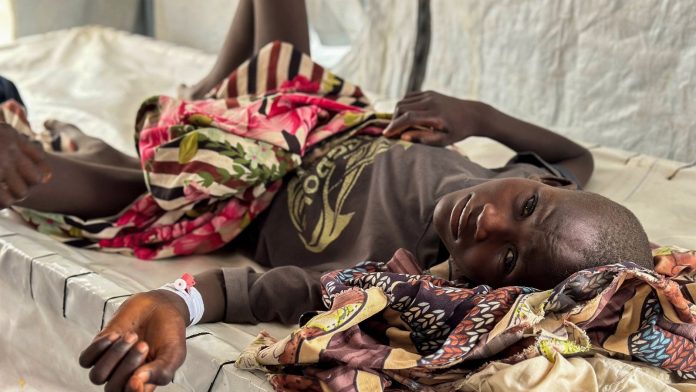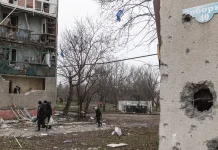
Sudan’s Darfur: A Forgotten Crisis Spirals into Deadly Cholera Outbreak
On the dusty, sun-baked plains of Darfur, a silent enemy creeps through the shadows of war—cholera, a devastating waterborne disease that has claimed at least 40 lives in the region within just one week. As the world’s attention remains scattered, Sudan’s worst cholera outbreak in years is unfolding quietly amid the roar of gunfire and echoes of clashing armies.
The Darfur region, already known for its painful history of conflict, displacement, and humanitarian disaster, is once again a frontline—this time against an epidemic threatening to swamp fragile communities. Doctors Without Borders, known by its French acronym MSF, has reported an alarming rise in cholera cases. Over 2,300 patients have presented to its treatment centers in Darfur alone in just seven days, with the region bearing the brunt of a year-long outbreak that has so far caused nearly 2,500 deaths from almost 100,000 suspected cases across Sudan.
The Perfect Storm: War, Displacement, and Disease
Darfur’s crisis is a brutal reminder of how conflict and public health emergencies are inextricably linked. “On top of an all-out war, people in Sudan are now experiencing the worst cholera outbreak the country has seen in years,” an MSF spokesperson reveals. The region’s ongoing conflict—between Sudan’s regular army and paramilitary groups such as the Rapid Support Forces—has shattered critical infrastructure, disrupted access to clean water, and forced hundreds of thousands into overcrowded displacement camps where sanitation is non-existent.
In Tawila, North Darfur, the situation is especially dire. Here, some 380,000 people have fled violence raging near El-Fasher, the last significant city under government control. The United Nations paints a grim picture: families surviving on a mere three liters of water each day—less than half the emergency minimum required for drinking, cooking, and hygiene. This scarcity renders basic health practices impossible.
“Imagine trying to wash your hands, let alone cook or clean dishes, when every drop counts,” says Amina Hassan, a local aid worker who has tirelessly labored in refugee camps near Tawila. “Mothers cannot protect their children from sickness when there is simply no clean water to be found.”
It’s in these conditions that cholera thrives. A bacterium transmitted through contaminated food and water, cholera spreads rapidly when communities lack clean sanitation. Within hours, it can drain a person of fluids through violent diarrhea and vomiting. Without prompt treatment—simple oral rehydration salts or antibiotics—the fatality rate is chillingly high.
Cholera’s Grim Statistics and Global Context
Sudan is far from alone in battling a cholera resurgence. Globally, since 2021, cholera cases have spiked and expanded geographically, underscoring how fragile health systems and climate pressures intertwine to fuel outbreaks. The World Health Organization highlights that more than two million cholera cases occur annually worldwide, resulting in tens of thousands of deaths—numbers likely underestimated due to poor surveillance and reporting.
In Sudan, MSF’s data from the past year paints a sobering tableau: 99,700 suspected cholera cases and 2,470 deaths as of August 11, 2024. The rapid movement of displaced people fleeing violence contributes to the bacteria’s spread, ferrying it beyond Darfur’s borders into neighboring Chad and South Sudan.
A Water Crisis Deepened by Warfare and Weather
The conflict’s shadow doesn’t just darken the streets; it poisons what little water remains. Facilities for clean drinking water and proper sewage disposal have been damaged or neglected for years. Worse still, recent heavy rains have flooded latrines and wells, mixing human waste with water sources. MSF’s Sylvain Penicaud, coordinating relief efforts in Tawila, recounts chilling moments: “Just two weeks ago, a body was found in a well inside one of the camps. Although we removed it immediately, within days, people were forced to draw water from the same well again due to lack of alternatives.”
This is no ordinary hardship. It is a harrowing testament to human resilience and tragedy. Families in displacement camps navigate a dangerous balancing act—drink from contaminated wells or face dehydration. The tragic irony is palpable: lifesaving water turns into a weapon of disease.
Voices from the Ground: Stories of Survival and Urgency
Behind the stark statistics lie real lives, lives shaped by despair but also hope.
“My little girl fell sick with diarrhea twice in the last month,” shares Mariam, a mother of three crammed in a makeshift tent near Tawila. “The clinic gives medicine, but sometimes we must walk through fighting to get there. This war feels endless, but the cholera might kill my children faster.”
Meanwhile, Sudanese health officials find their hands tied. “Our hospitals are overwhelmed, understaffed, and struggling to keep up with the influx of cholera patients, especially with so many displaced families arriving daily,” explains Dr. Alaa Osman, a physician in El-Fasher.
MSF’s head of mission in Sudan, Tuna Turkmen, issues a plea loaded with urgency and humanity: “Survivors of war must not be left to die from a preventable disease. This is a crisis of intersectional suffering that demands immediate international attention and support.”
The Larger Picture: What Darfur’s Outbreak Reveals About Our World
Darfur’s cholera outbreak reminds us how fragile peace and public health truly are. The disease thrives where infrastructure collapses and humanity fractures. It underscores the critical need for international solidarity to address not just war, but its cascading consequences.
In an era of climate change, forced migration, and political instability, Darfur stands as a cautionary tale. Are we ready to confront the interconnected nature of these crises? How many more must suffer before global systems prioritize holistic, on-the-ground responses that blend urgent humanitarian care with long-term peacebuilding?
As you read these words, somewhere in the arid swirl of Darfur, a mother’s hands tremble as she fetches water. Somewhere else, a child fights for life in a tent hospital. The tragedy of cholera here transcends borders—it is a call to conscience.
What Can Be Done?
- Increase emergency aid to provide clean water and sanitation facilities in contested zones and displacement camps.
- Scale up vaccination campaigns to prevent the spread of cholera in vulnerable communities.
- Strengthen regional cooperation to track and respond to outbreaks that cross borders.
- Address the root causes—conflict resolution and rebuilding basic infrastructure—to prevent future epidemics.
We must ask ourselves: in a world with the knowledge and resources to prevent such suffering, what will it take to turn the tide for Darfur?









